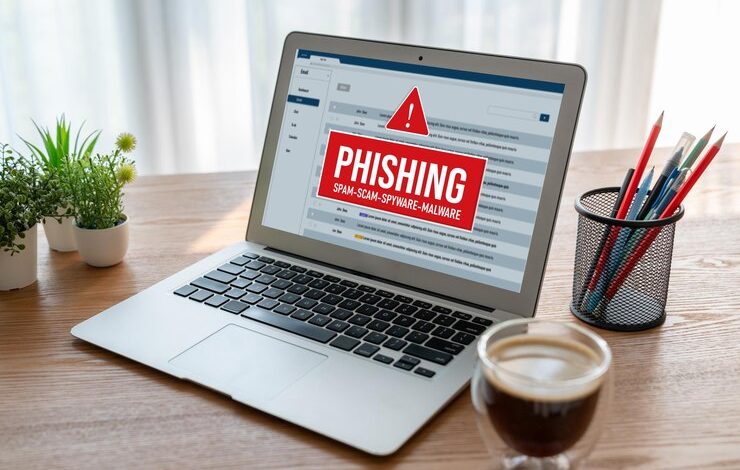
How To Recognize Phishing Attack
how to recognize phishing attack, In the ever-expanding digital landscape, online threats continue to evolve, and users must be equipped with knowledge and tools to protect themselves. Phishing attacks, in particular, pose a significant risk to personal information and online security. In this comprehensive guide, we will explore how to recognize phishing attacks, provide essential tips on avoiding them, and discuss methods to block inappropriate websites for a safer online experience. follow this link and read more about blockchain security and get a buy a course on mastering social media ethical hacking and phishing attack Buy Now from Udemy.

Recognizing Phishing Attacks
Phishing attacks involve deceptive tactics to trick individuals into revealing sensitive information such as usernames, passwords, and financial details. Recognizing these attacks is crucial for maintaining online security. phishing attack can come inform of fake website and link within the body of an email read more at what-is-phishing
-
- Check the Sender’s Email Address: Phishing emails often come from addresses that mimic legitimate sources. Examine the sender’s email address carefully, looking for misspellings or slight variations from the official domain.
- Verify Email Content: Legitimate organizations typically communicate professionally. Be suspicious of emails with poor grammar, spelling errors, or a sense of urgency, as these are common indicators of phishing attempts.
- Hover Over Links: Hover your mouse over any links in emails without clicking on them. This action reveals the actual URL, allowing you to check if it matches the purported destination. Phishers often use misleading links to redirect users to fraudulent websites.
- Be Cautious of Urgent Requests: Phishing emails often create a sense of urgency, claiming immediate action is required. Be skeptical of requests for sensitive information or urgent actions and verify the legitimacy of such messages through alternative means.
- Check for Personalization: Legitimate organizations usually address individuals by their name. Phishing emails may use generic greetings, such as “Dear Customer” or “Dear User.” Lack of personalization is a red flag.
- Look for Secure Connections: Legitimate websites use secure connections (HTTPS). If a website requires personal information, ensure the URL starts with “https://” and check for the padlock icon in the address bar.
- Examine Website URLs: Phishers often create fake websites with URLs resembling legitimate ones. Double-check the website’s URL for misspellings, additional characters, or unusual domain extensions.
- Beware of Pop-Up Windows: Phishing websites may use pop-up windows to gather information. Avoid entering personal details in pop-ups and only provide information through secure, established channels.
- Verify Unexpected Attachments: Avoid opening unexpected email attachments, as they may contain malware. Verify the sender’s identity before downloading or opening any files.
- Use Email Security Features: Enable email security features provided by your email service provider. These may include spam filters and additional security settings that help detect and filter out phishing emails, read about email security feature on Cyber-Hub.
Tips on Avoiding Phishing Attacks
Still in how to recognize phishing attack, Now that we’ve covered how to recognize phishing attacks, let’s explore practical tips on avoiding falling victim to these deceptive tactics.
- Educate Yourself and Others: Stay informed about the latest phishing techniques and share knowledge with friends, family, and colleagues. Awareness is the first line of defense.
- Use Two-Factor Authentication (2FA): Implement 2FA wherever possible. Even if your password is compromised, an additional layer of authentication adds a crucial barrier for unauthorized access.
- Regularly Update Passwords: Change passwords regularly and avoid using the same password across multiple accounts. Strong, unique passwords make it harder for attackers to gain unauthorized access.
- Enable Account Alerts: Turn on account alerts or notifications offered by online platforms. These alerts can notify you of suspicious activities, allowing you to take immediate action.
- Verify Communication Channels: If you receive unexpected requests for sensitive information, verify the request through a separate, trusted communication channel, such as a phone call or official website.
- Use Security Software: Install reputable antivirus and anti-malware software on your devices. Regular scans help detect and remove potential threats.
- Keep Software Updated: Ensure that your operating system, antivirus software, and web browsers are up to date. Updates often include security patches that protect against the latest threats.
- Limit Personal Information Sharing: Be cautious about sharing personal information on social media platforms. Cybercriminals often exploit publicly available information for phishing attacks.
- Report Suspected Phishing Attempts: If you receive a phishing email, report it to your email service provider and relevant authorities. Reporting helps prevent others from falling victim to similar attacks.
- Use a Virtual Private Network (VPN): Consider using a VPN to encrypt your internet connection. This adds an extra layer of security, especially when using public Wi-Fi networks.
How to Block Inappropriate Websites
Still in how to recognize phishing attack ,In addition to safeguarding against phishing attacks, blocking inappropriate websites is essential for maintaining a secure online environment, especially for families and organizations.
- Utilize Parental Control Software: Parental control software allows you to monitor and restrict the online activities of children. These tools often include content filtering options to block inappropriate websites.
- Enable Safe Search Filters: Most search engines offer safe search filters. Enable these filters to prevent explicit content from appearing in search results.
- Modify Router Settings: Some routers come with built-in content filtering options. Access your router settings to set up filters and block specific websites based on content categories.
- Install Browser Extensions: Browser extensions like “WebFilter Pro” or “Block Site” can be added to enhance content filtering capabilities. These extensions often allow you to customize the list of blocked sites.
- Use OpenDNS: OpenDNS provides free parental control tools that allow you to filter and block inappropriate content at the DNS level. This helps in preventing access to harmful websites network-wide.
- Employ Firewalls: Firewalls act as a barrier between your computer and the internet. Configure your firewall settings to block access to websites with explicit or inappropriate content.
- Educate and Communicate: Educate family members, especially children, about the importance of responsible internet usage. Establish open communication about online safety and discuss the potential risks of accessing inappropriate content.
- Regularly Update Software: Keep your operating system, antivirus software, and browser up to date. Updates often include security patches and improvements that enhance the effectiveness of content filtering.
- Create User Accounts with Restrictions: On shared devices, create separate user accounts with restricted access for children or guests. This ensures that inappropriate content is accessible only to authorized users.
- Monitor Internet Usage: Stay vigilant by regularly monitoring internet usage patterns. If you notice any unusual activity or attempts to access inappropriate content, take immediate action to reinforce security measures.
Discover more from Infotech
Subscribe to get the latest posts sent to your email.





